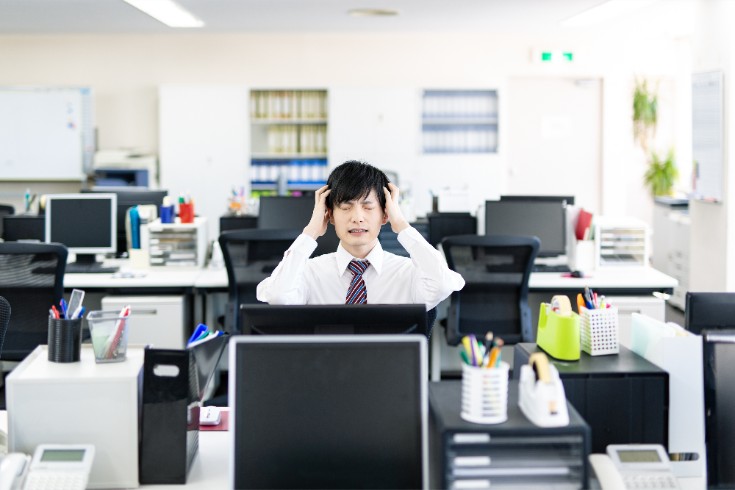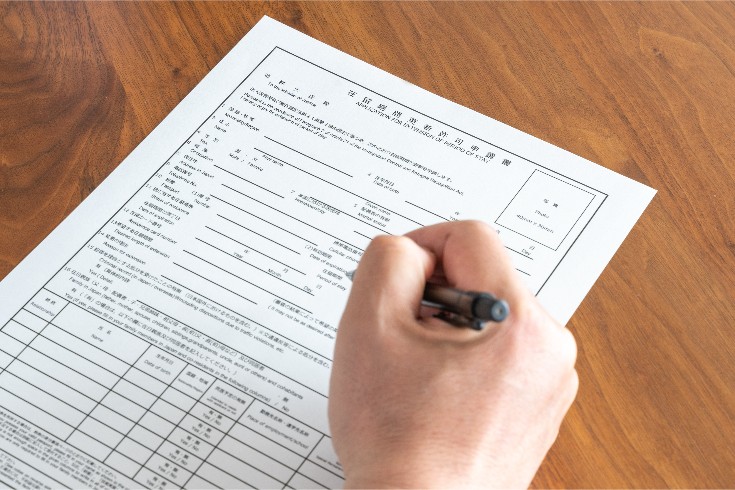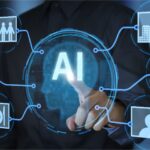Generative AI and Japanese Copyright Law: A Legal Risk Guide for Businesses

Generative AI has the potential to significantly transform many aspects of business operations, from content creation to research and development, and customer service. Its applications continue to expand rapidly. However, this technological innovation raises new legal challenges for companies, particularly in relation to the Japanese Copyright Law. As many companies consider adopting or further expanding their use of generative AI, it is crucial to accurately understand and manage the copyright infringement risks that accompany its convenience. Japanese Copyright Law has a distinctive structure that applies different legal principles to the development and usage stages of AI, which makes the framework complex. To promote AI development, the law provides relatively lenient provisions during the learning phase, while imposing strict responsibilities on users who utilize the generated outputs. Understanding this dual structure is the first step in risk management. This article systematically examines the main legal issues raised by generative AI within the Japanese Copyright Law framework. Specifically, it addresses the legal treatment during the ‘development and learning phase’ of AI, the risks of copyright infringement in the ‘generation and usage phase’ in business, the attribution of copyright to AI-generated works, and the corporate responsibilities and legal measures in the event of an infringement, and offers strategic guidance for management teams and legal practitioners based on the views of the Agency for Cultural Affairs, a Japanese government body.
AI Development and Learning Phases Under Japanese Copyright Law
To exhibit advanced capabilities, generative AI must be trained on vast amounts of data. This data includes a variety of copyrighted works such as text, images, music, and program code. Japanese copyright law facilitates the use of such works in AI development by providing provisions that exempt the need for copyright holder’s permission under certain conditions.
The key provision here is Article 30-4 of the Japanese Copyright Law, introduced in the 2018 amendment. This article allows for the use of copyrighted works “not for the purpose of enjoying the thoughts or feelings expressed in the work,” and is classified as one of the “flexible rights restriction provisions.” The purpose of AI learning is not for humans to appreciate and enjoy works (i.e., “enjoy”), but rather to extract and analyze patterns and structures contained in the data for information analysis. Because AI learning falls under a “non-enjoyment purpose,” AI developers may, in principle, use publicly available internet data for training without obtaining permission from copyright holders. This provision is backed by policy intentions to promote technological innovation and enhance industrial competitiveness in Japan.
However, there are important exceptions to this principle. Article 30-4 of the Japanese Copyright Law stipulates in a proviso that “this does not apply if, in light of the type and purpose of the copyrighted work and the manner of its use, it would unjustly harm the interests of the copyright holder.” What constitutes “unjust harm” requires a case-by-case assessment, but the Agency for Cultural Affairs in Japan has outlined several types in its publication “Considerations on AI and Copyright.”
For example, the act of copying and using for learning purposes, without payment, database works that are organized and sold specifically for AI learning purposes, is likely to directly compete with the market of the database provider and unjustly harm their interests. Also, training AI exclusively on the works of a specific creator to generate content that mimics their style may deviate from the original “non-enjoyment purposes” and be judged as having a concurrent enjoyment purpose. Furthermore, collecting data from known pirated works, so-called pirate editions, for AI learning is also problematic as it may encourage infringement of rights.
In short, lawful AI development demands more than the ability to collect and copy data; it also requires careful assessment of potential economic impact on current markets and rights holders. Companies engaging in or outsourcing AI development should thoroughly verify where training data comes from and how it is used, to ensure consistency with the applicable legal and ethical requirements.
The Risks of Copyright Infringement When Using AI-Generated Content Under Japanese Law
Even if the development and training stages of AI are conducted legally under Article 30-4 of the Japanese Copyright Law, there is no guarantee that the content generated by using AI will not infringe on copyrights. Legal leniency is limited to the training phase; at the generation and usage stages, users themselves directly bear the risk of copyright infringement.
In Japanese case law, for copyright infringement to be established, it is generally required that two criteria are met: “similarity” and “dependence.” Similarity refers to the substantial resemblance of the later work to the creative expression of the existing copyrighted work. Mere ideas, styles, or common expressions shared are not enough to establish similarity. Dependence means that the later work was created based on the existing copyrighted work, and if it was created by chance without knowledge of the existing work, dependence is negated.
When using generative AI, it is entirely conceivable that the output may resemble existing copyrighted works. The issue lies in determining dependence. If AI users are aware of a specific copyrighted work and provide instructions (prompts) to replicate it, dependence is clearly established. More complex is the scenario where the user is unaware of a specific work, yet the AI generates something similar because it had that work in its training data. Although no settled legal view exists yet, some argue that dependence could be inferred where the AI’s training data includes the copyrighted work. AI models’ training data is often vast and opaque, making it virtually impossible for users to fully comprehend it. This represents an intrinsic legal risk that is extremely difficult for companies to manage.
Since it is impossible to completely eliminate this risk, companies must manage it and take practical measures to prepare for potential disputes. First, it is crucial to establish clear guidelines for the use of generative AI within the company and ensure thorough employee training. It is necessary to define what purposes, which AI tools, and how they may be used. Secondly, a process should be introduced to review and edit AI-generated content by human eyes, especially before releasing it externally. Using AI output only as a starting point and then adding human creative input to the final product can help reduce similarity to existing works. Thirdly, it is advisable to retain records related to the generation process as much as possible. Records of what prompts were used for generation can be valuable evidence to demonstrate the absence of intent to infringe when dependence is contested.
Comparing Key Legal Issues in AI and Copyright Under Japanese Law
The legal issues surrounding AI and copyright vary significantly depending on the stage of the AI lifecycle. The table below compares and organizes the main legal points at the “development and learning stage” and the “generation and utilization stage.” Through this comparison, you can clearly understand how the location of responsibility and the nature of risk change.
| Comparison Item | Development & Learning Stage | Generation & Utilization Stage |
| Main Relevant Laws | Article 30-4 of the Japanese Copyright Law | Reproduction and adaptation rights under Japanese Copyright Law |
| Central Legal Issues | Whether the purpose of use is “non-enjoyment” and whether it “unjustly harms” the copyright holder’s interests | Whether the generated product is “similar” to and “reliant” on existing copyrighted works |
| Main Responsible Parties | AI Developers | AI Users |
| Nature of Legal Risks | Legal flaws in the development process due to illegal data collection and learning | Direct infringement liability due to the creation and publication of unintended copyright-infringing products |
Copyright of AI-Generated Works Under Japanese Law
When companies utilize AI to create marketing materials, designs, reports, and other content, a critical issue arises: “Does copyright emerge for the generated works, and if so, to whom does it belong?” This is crucial because it determines whether company-generated content can be protected as intellectual property and used to prevent unauthorized exploitation by others.
Article 2, Paragraph 1, Item 1 of the Japanese Copyright Law defines a work as “something that creatively expresses thoughts or feelings and belongs to the fields of literature, academia, fine arts, or music.” At the core of this definition is the assumption that the creator is human. Since AI is not human, the current law does not recognize AI as an author capable of holding copyright for content it autonomously generates.
Therefore, whether copyright is granted to AI-generated works hinges on the presence or absence of “creative contributions” by humans in the generation process. In other words, protection may arise only when AI functions as an auxiliary tool and the human is assessed as having made a creative contribution.
Whether “creative contributions” are recognized depends on the degree of human involvement. For instance, if a human inputs a simple and general prompt like “a cat illuminated by the sunset,” and AI autonomously determines most of the specific expression, the human input is too limited for the result to be treated as a copyright-protectable work.
On the other hand, if a human has a specific creative intent, incorporates numerous detailed instructions into the prompt, and iteratively experiments to elicit a particular expression, the process itself may be deemed creative, allowing the output to be treated as a copyrighted work. Furthermore, if a human selects and arranges multiple images generated by AI and significantly edits and modifies them to complete a work, the creative editing and processing by the human clearly generate copyright.
This has important strategic implications for companies. To create valuable intellectual property using AI, it is essential not only to instruct AI to generate but also to intentionally incorporate human creative involvement into the process and document it. Keeping records of detailed prompt histories, the selection process of generated results, and the specific content of human post-processing can serve as crucial evidence for claiming and protecting the copyright of that content in the future.
Determining Liability and Legal Actions Faced by Companies in Japan
When the use of generative AI unintentionally infringes on copyright, companies may face serious legal actions. Copyright holders have several powerful legal tools at their disposal under Japanese Copyright Law and the Japanese Civil Code to protect their rights.
The most direct action is a civil claim. Copyright holders can file an “injunction request” to stop or prevent the infringement. This forces companies to immediately cease using the infringing content and, for example, remove it from their websites. Additionally, they may face a “claim for damages” for any losses suffered by the copyright holder due to the infringement. The damages assessment is often complicated and can be sizable, particularly where it is linked to the infringer’s profits. If the right of authorship is violated, the copyright holder may also demand measures for “restoration of honor,” such as the publication of an apology advertisement.
Beyond civil liability, copyright infringement can also be subject to criminal penalties. In particularly egregious cases, a complaint from the rights holder can lead to criminal prosecution. Individuals may face up to 10 years in prison or a fine of up to 10 million yen, but if a corporation commits the infringement as part of its business activities, it can be fined up to 300 million yen, which represents a very severe sanction for companies.
The primary party responsible is, in principle, the user of the AI that utilizes the generated content, namely the company itself. However, if the AI developer’s service is designed to intentionally or with high probability generate something similar to a specific copyrighted work, depending on how the system is designed, the developer may also share responsibility.
Currently, there are few definitive court cases in Japan that directly address copyright issues with generative AI. However, disputes are already occurring, such as when a major Japanese newspaper company filed a lawsuit against a foreign generative AI operator for using their paid articles without permission and demanded compensation for damages. In the absence of judicial decisions, the official views and guidelines presented by the Agency for Cultural Affairs effectively function as de facto standards for companies when assessing legal risks and designing compliance frameworks. Therefore, a company’s compliance strategy should be based on strictly following the guidance of this administrative agency.
Conclusion
While generative AI can bring immeasurable benefits to companies, it also carries significant legal risks under Japanese copyright law. The Japanese legal system has a dual structure that allows for flexible responses during the learning phase to promote AI development, while imposing strict liability for copyright infringement on users who utilize the generated content. A solid understanding of this structure is key for companies to safely harness AI technology. Even if the AI’s learning data is lawfully collected, users who generate content that resembles existing copyrighted works may face serious civil and criminal liabilities. To manage these risks, companies need specific measures, including clear internal rules, robust human review processes, and documentation of how content is created and edited.
Monolith Law Office has a proven track record of providing extensive advice to numerous clients within Japan on complex legal issues surrounding generative AI and copyright. Our firm boasts experts who are not only qualified as Japanese attorneys but also hold foreign legal qualifications and are English speakers, enabling us to offer meticulous support for companies engaging in international business to accurately navigate the Japanese legal system. We provide specialized legal services, including consultations on issues explained in this article and support for building concrete internal systems.
Category: General Corporate





















